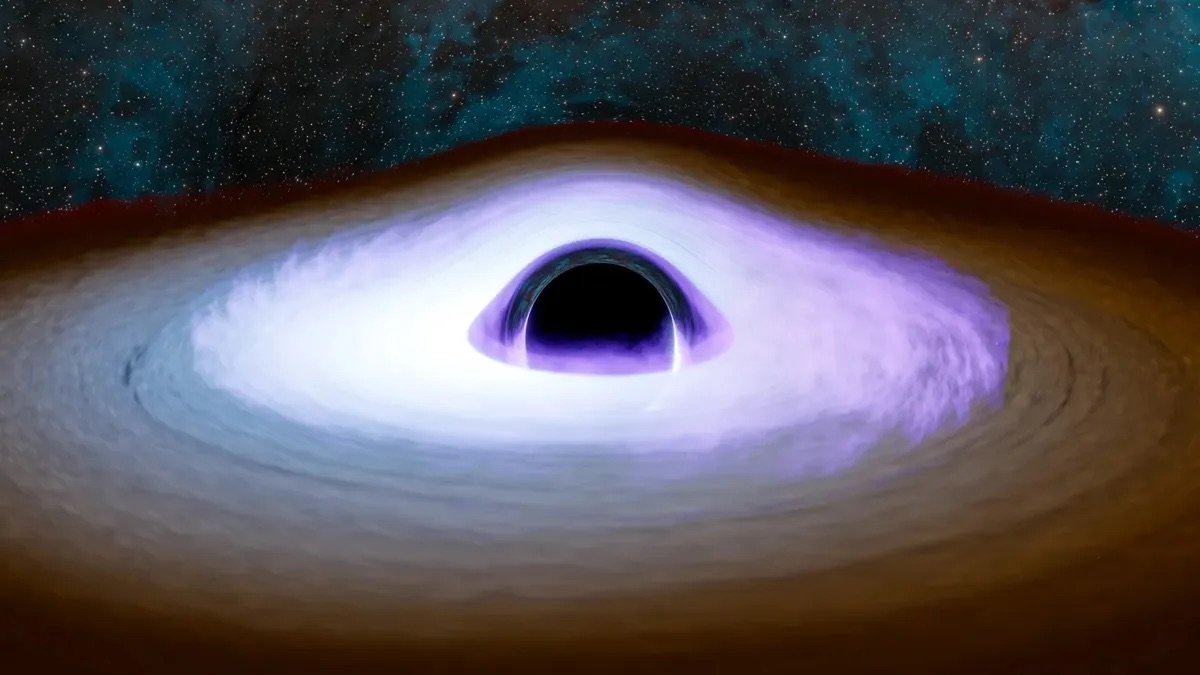Despite their name, black holes are often surrounded by bright, radiating whirlpools of matter known as accretion disks — and, typically, the enormous gravity of a black hole can l draw in surrounding gas, or even stars, that send ultra-powerful jets of electromagnetic radiation out into space.
A persistent mystery, however, has been the structure and makeup of black hole coronas — dynamic plasma regions that are part of the flow of matter into the black holes themselves. Similar to the Earth’s sun and other stars, a black hole;s corona is essentially a super-heated atmosphere. As NASA states, they can reach temperatures of billions of degrees.
Now, researchers using NASA’s Imaging X-ray Polarimetry Explorer (IXPE) have gathered data about 12 known black holes to determine the structural properties of accretion disks around different sized versions of these objects. Then, they looked into how these variables might affect the shape of the black holes’ coronas.
Astrophysicists have been aware of coronas around stellar-mass black holes — black holes that have typically 10 to 30 times the mass of the sun, that formed from a stellar collapse — and supermassive black holes such as Sagittarius A* at the center of the Milky Way, for some time.
“Scientists have long speculated on the makeup and geometry of the corona,” Lynnie Saade, a postdoctoral researcher at NASA’s Marshall Space Flight Center, and lead author of the new findings, said in a press release. “Is it a sphere above and below the black hole, or an atmosphere generated by the accretion disk, or perhaps plasma located at the base of the jets?”
IXPE was able to peer into the heart of the black holes’ coronas via X-ray polarization. The idea is similar to how astronomers study the sun’s corona during a total solar eclipse. In turn, IXPE allows astronomers to understand the geometry of the accretion disk, and the related structures such as the coronas.
“X-ray polarization provides a new way to examine black hole accretion geometry,” said Saade.
The researchers found that the corona was extended in the same direction as the accretion disk for all of the different classes of black hole they observed. This provides the first evidence that the coronas of black holes share a structural relationship with the black holes’ accretion disks.
Among the black holes studied were Cygnus X-1 Cygnus X-3, stellar-mass binary black hole systems roughly 7,000 and 37,000 light-years from Earth, and LMC X-1 and LMC X-3, stellar-mass black holes that live in the Large Magellanic Cloudsome 165,000 light-years away. A number of supermassive black holes were also observed, such as the one at the center of the Circinus galaxy, about 13 million light-years away, and NGC 1068 and NGC 4151, which extend 47 million light-years and 62 million light-years away, respectively.
The most exciting part of the findings, researchers say, is that despite the vast difference in masses between the black holes studied, the IXPE data suggests both share accretion disks and coronas of similar geometry.
“Stellar-mass black holes rip mass from their companion stars, whereas supermassive black holes devour everything around them,” Philip Kaaret, principle investigator for IXPE mission, said in a press release. “Yet the accretion mechanism functions much the same way.”
This bodes well for the future study of black holes — as researchers study stellar-mass black holes closer to home, they will still be able to make inferences about the features of supermassive black holes that sit at the center of far-off galaxies as well.
From Space.com





